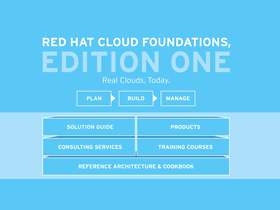Red Hat says everybody gets a cloud


The offering includes new JBOSS and KVM hypervisor and VMWare support software, a white paper, and a closer relationship with Microsoft.
All this is meant to assure "c-level" executive types that building clouds on Red Hat won't be a technological cul de sac, and that other big vendors have its back, as it works to make the Internet one cloudy sky.
Red Hat also made some Wall Street friendly news, with solid growth in revenues and earnings as well as more share buybacks.
What's going on is a strategic move to lead boardrooms toward virtualizing their entire infrastructure, the kind of "big iron" evolution you normally associate with a Microsoft or an IBM. As big rivals move more into high-revenue services, Red Hat aims to be a friendly, neutral "Switzerland" for the software needed to make it work.
This is possible because open source makes the code transparent. Proprietary code would be hidden from view, leading to FUD back-and-forth and interminable delays in making a "bet the company" move. This way everyone's revenues are maximized, and top management is given the assurances needed to move.
This doesn't mean proprietary technology has no place. Red Hat is merely placing itself at the center of the new ecosystem, making the software "glue" that keeps everything together.
The hope is this becomes a commodity business, a profitable revenue generator for years to come, with open source at the bottom of the stack and Red Hat as a key support vendor for that software.
This is the second major technology transition in the open source era -- the move to Web-based services was the first -- and the role of open source seems more central this time, even as the task ahead appears more difficult.